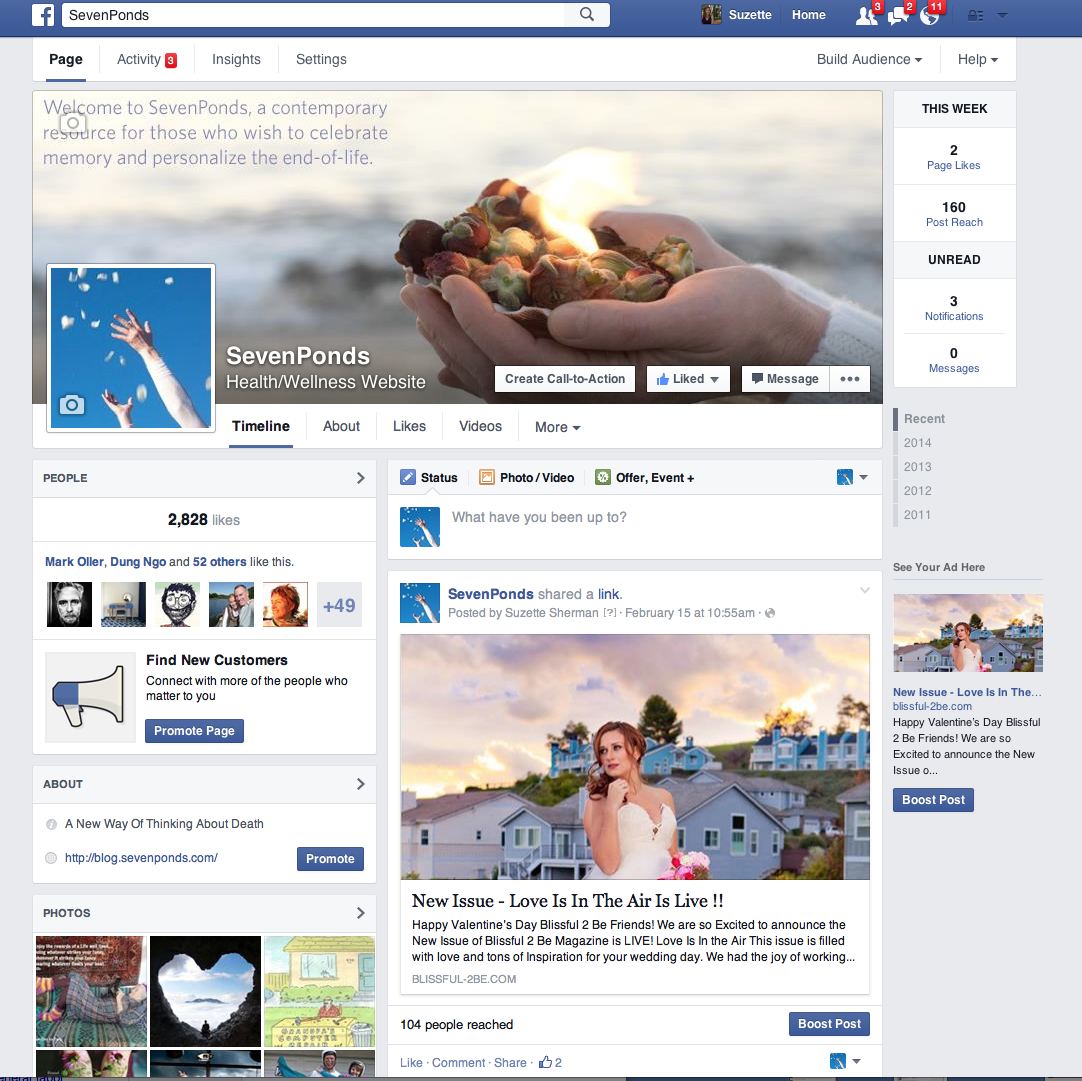I’ll consider this post my throw-away, because it’s slightly ridiculous and I have more that I’d like to write about. Just some random musings. But after skimming through some of the posts from last Friday, I came across a very interesting post by Jack that discussed the ways in which we’re losing the visual literary traditions we’ve been studying.
I 100% agree that our contemporary Western culture undervalues calligraphy and the talent required to quite literally sculpt a book from natural materials. When it comes to script, I believe we’ve lost a very intriguing art form. However, I believe that current methods of Western communication retain many visual elements that correspond to illuminated manuscripts, perhaps in unexpected places.
Am I the only one who sees an eerie similarity between the Facebook layout and the illuminated manuscript template we got in class the other day? I couldn’t find a pdf of the handout on Blackboard, but here’s an example of a Facebook profile:
The profile picture stands in for the historiated letter, the bar reserved for ads on the right corresponds to the marginalia, the different sizes/colors of text resemble rubrics (words highlighted in red to designate a new section), the cover photo is the main miniature, and the various posts/announcements are presented in a manner akin to the succinct and simplified verses copied into manuscripts for the illiterate. Of course, that last observations begs the question: are we reverting to a textually simplified, semi-illiterate means of obtaining our information, heavily based upon obvious visual cues and pictures? No, I don’t think so. But it could be the ultimate throwback.
Contrary to popular belief, the United States is not an entirely literate nation. However, broadly speaking, literacy has become inconceivably more accessible in the past 100 years than it ever would have been for medieval laypeople. Facebook is different in that its ultimate goal is to communicate written ideas accompanied by pictures, whereas for owners of Books of Hours, the written text was unnavigable territory only decoded through the use of miniatures.
Still, I think it’s significant that our minds apparently continue to find the general layout of the illuminated manuscript intriguing and pleasurable. Much of this has to do with the incorporation of visual signs; they grab our attention and are aesthetically enjoyable. Facebook may have replaced hand-drawn illustrations with a wide array of imagery (photographs, video, digital art, and pictures of paintings) but one can’t ignore its focus on the visual aspect of storytelling. Some of my friends post nothing but photos. The images we encounter continue to tell stores in a compelling way; that’s something literacy hasn’t been able to eradicate.
I think we underestimate the presence of visual literary traditions and their “unconventional” narratives.

